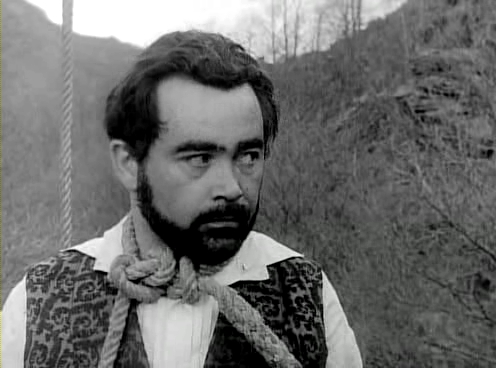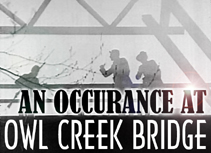Teaching Guide to “An Occurrence at Owl Creek Bridge” by Ambrose Bierce
In this handy teacher’s guide you’ll find a summary of the excellent story “An Occurrence at Owl Creek Bridge” along with possible topics for analysis with your students and some lesson plan ideas.
Ready for a Hanging

At a short remove upon the same temporary platform was an angry football player in the uniform of his team, armed. He was a captain. He demanded better “An Occurrence at Owl Creek Bridge” lesson plans, an easy to understand summary, and an intelligent analysis.
The teacher could have used this teacher’s guide.
____________________________________________

- All the cool stuff you see here
- Graphic organizers and rubrics
- Additional lesson plans
- A quiz that focuses on common core standards-not the typical quiz you find online that only asks for the facts
- A copy of the story
The downloadable/printable pdf means you can print out the lesson plans and stick them in your lesson plan book for your administrator to admire. The user friendly graphic organizers, rubric, and quiz just need printed and copied. It’s only $3.50 (The big publishing companies will charge you six times that much).
_____________________________________________________
“An Occurrence at Owl Creek Bridge” Summary

Sometimes I feel like this before 6th period.
Part I: The story begins at…you guessed it…Owl Creek Bridge, a pleasant sounding name for a bridge. Peyton Farquhar thinks of many things as he stands on this bridge, with hands behind his back, wrists bound with cords, as he stares at the water 20 feet below, with a noose around his neck. He doesn’t think, however, about the pleasantness of the bridge’s name he is to be hanged from. He does think of his family, his home, and that if he could just free his hands, he could remove the noose, dive into the water and swim to safety.
Part II: Peyton Farquhar was a gentleman and a plantation owner devoted to the Southern cause, but unable to serve in the Confederate army. Upon hearing news from a Federal scout in disguise that the Owl Creek Bridge was being repaired for use by Union forces, Farquhar sets out to destroy it. He is caught and, therefore, awaits hanging from the very bridge he tried to destroy.

“An Occurrence at Owl Creek Bridge” Analysis
An analysis of “An Occurrence at Owl Creek Bridge” produces the following discussion topics and observations:
Realism - The use of details establishes authenticity for the story’s setting; even Farquhar’s imagined escape contains realistic detail up to the point where he discovers the tree-lined road leading up to his house, which by the way, is a realistic dream someone might have while being hanged from a bridge in northern Alabama (not that I’ve ever been hanged from a bridge in northern Alabama; I’m just speculating). Bierce draws on his experience as a Civil War soldier (he fought for the North) to create a realistic military atmosphere. Bierce’s realistic, detailed portrayal of the violence of war negates its often romanticized portrayal.
Foreshadowing - The story’s power originates from its shocking conclusion. Bierce does, however, reveal clues as to the nature of Farquhars “escape” (clues that are much easier to recognize after having read the story several times, by the way). These clues include the preposterous nature of his escape. Farquhar mentions his plan of escape in part 1, a completely absurd plan that occurs in part 3. The perfect, isolated tree-lined road, followed by pained neck, swollen tongue, and congested eyes hint at Farquhar’s death, in addition to the fantasy like appearance of his wife running to him right before the secret is revealed.
Author’s Purpose and Plot Structure - “An Occurrence at Owl Creek Bridge” makes for a good discussion on author’s purpose and narrative structure. The story’s neatly aligned into three sections (much like the neat alignment of soldiers), within which is fantasy, feigned heroism, and violent death (sounds like war). The first section contains the exposition. The second section contains additional background information along with a flashback. The third section contains the suspenseful escape and shocking conclusion. It ironically contains the shortest time sequence and the most words.
“An Occurrence at Owl Creek Bridge” Lesson Plans
Don’t get hung up on creating your own lesson plans. Use these lesson plans instead.
- Use the analysis to assign a literary analysis essay. Use these suggestions for instruction.
- “An Occurrence at Owl Creek Bridge” lends itself to literary annotations. Use the linked lesson plan in the previous sentence. Annotation for this story is ideal for advanced students reading it for the first time.
- Bierce establishes a realistic setting through the use of details. Teach the importance of word choice and sensory details with the following lesson plans:
- Create a chart: In the left column, write story details; in the right column, write the effect of the detail.
- Instruct students to draw the scene. Individual white boards work well
- For those not familiar with the Civil War, a simple prereading lesson plan includes setting up groups of four, with each group getting a large slice of butcher or poster paper. Students have 10-15 minutes to write everything they know about the Civil War. Encourage them to draw really nice pictures.
- I’m not sure this could really be considered a lesson plan, but I’m sure you cold conjure up an objective or two, if required: Twilight Zone’s Rod Serling introduces an outstanding short movie of the story at this link. It’s well done.
ELA Common Core Standards Covered
The following assignments cover the following ELA common core standards for reading and writing. This is for your administrator, not your kids. Kids need student-friendly worded objectives.
- RL.9-10.1 Cite strong and thorough textual evidence to support analysis of what the text says explicitly as well as inferences drawn from the text.
- RL.9-10.2 Determine a theme or central idea of a text and analyze in detail its development over the course of the text, including how it emerges and is shaped and refined by specific details; provide an objective summary of the text.
- RL.9-10.3 Analyze how complex characters (e.g., those with multiple or conflicting motivations) develop over the course of a text, interact with other characters, and advance the plot or develop the theme.
- RL.9-10.5 Analyze how an author’s choices concerning how to structure a text, order events within it (e.g., parallel plots), and manipulate time (e.g., pacing, flashbacks) create such effects as mystery, tension, or surprise.
- W.9-10.2 Write informative/explanatory texts to examine and convey complex ideas, concepts, and information clearly and accurately through the effective selection, organization, and analysis of content.
Short Story Guides
Teaching the Reading Literature Common Core Standards are easy with short stories.
- The Black Cat
- The Cask of Amontillado
- The Masque of the Red Death
- The Necklace
- The Most Dangerous Game
- The Interlopers
- The Gift of the Magi
- An Occurrence at Owl Creek Bridge